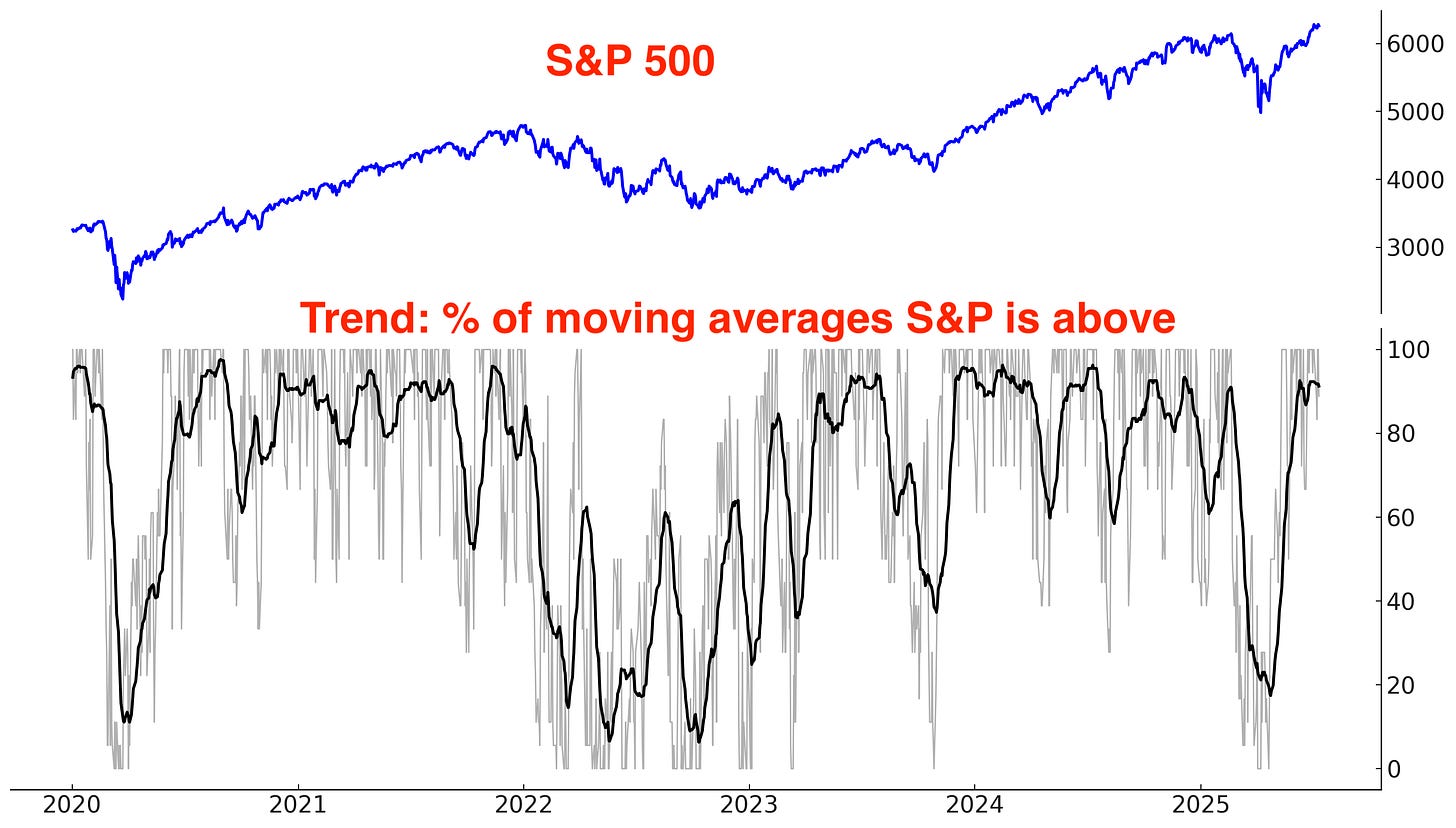Markets Report: more breakouts and all-time highs
Signs of froth & a special update on Bitcoin
Stocks are making new all-time highs, Bitcoin broke out, and the U.S. Dollar is stabilizing. Retail has been right to buy every dip (so far), while hedge funds and institutional asset managers lagged.
U.S. Stocks
Stocks continue to trend higher, with popular growth stocks like Robinhood pushing to new all-time highs. The S&P 500 is up more than +25% in the past 3 months:
From a short term perspective, this rally is getting stretched. The S&P has been above its 20 day moving average for 54 consecutive trading days. Short term pullback soon?
Corporate Insiders
The Corporate Insider Sell/Buy ratio jumped because Insider Buying has disappeared. However, this was not a consistently accurate bearish signal in the past: corporate insiders tend to turn bearish too early:
Breadth
Here are the % of S&P 500 stocks above their 200 and 50 day moving averages:
Sentiment Surveys
AAII Bulls-Bears:
Investors Intelligence Bulls-Bears jumped. Newsletter writers are increasingly bullish:
The NAAIM Exposure Index (National Association of Active Investment Managers) is bullish:
Other Sentiment
CNN Fear & Greed is elevated:
The S&P 500’s Daily Sentiment Index is elevated:
Options
The $ value of all Call volume - the $ value of all Put volume is elevated:
The SKEW Index, which reflects perceived tail risk in the options market — or the probability of extreme downside moves — remains muted. Despite the S&P making new all-time highs, SKEW fell!
Fund Flows
*Fund flows aren’t automatically contrarian. It depends on what type of trader is buying/selling and why. Some ETFs are traded by mean-reversion traders, while other ETFs are traded by trend followers. Moreover, many ETFs are small relative to the underlying market, so fund flows don’t always reflect broad sentiment towards that market.
TQQQ is traded by mean-reversion traders who buy the dip when TQQQ falls and sell (take profits) when TQQQ rallies.
TQQQ is still seeing outflows, which suggests that these mean-reversion traders are still taking profits:
VIX ETFs are also traded by mean-reversion traders; they buy when VIX is low and sell (take profits) when VIX is high.
VIX ETFs have consistently seen inflows over the past 2 months. These traders are betting on stocks to pullback and VIX to jump:
Investors are rushing into SMH now that AI-related stocks like Nvidia are making new all-time highs:
The 10 largest U.S. equity ETFs are seeing inflows:
Trend
The trend is your friend, until it ends. Stocks are trending higher:
Why does trend matter? Because at least from a trend following perspective, it’s better to buy when the market is trending Up (e.g. above its 200-DMA) than when the market is trending Down (e.g. below its 200-DMA).
*There is nothing “special” about the 200 day moving average, except the fact that it’s popular. It is not significantly different from the 195, 190, 185, 180, 205, 210, 215, or 220 moving averages.
Long above vs. below the S&P 500’s 200 day moving average:
Long above vs. below the S&P 500’s 50 day moving average:
Long above vs. below the S&P 500’s 20 day moving average:
Earnings & Valuations
Some traders say that valuations and fundamentals are useless, and that “only price matters”. While this is true for day traders (valuations have zero impact on the market’s short term direction), fundamentals matter for traders and investors with longer term horizons.
Valuations for large cap stocks (S&P 500) remain elevated compared to their 10 year average:
Here’s the S&P 500’s forward earnings expectations. In the long run, earnings and stock prices move in the same direction. Earnings are still growing right now.























